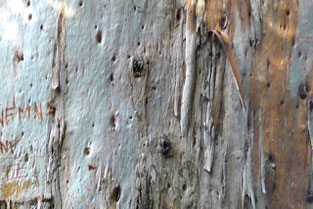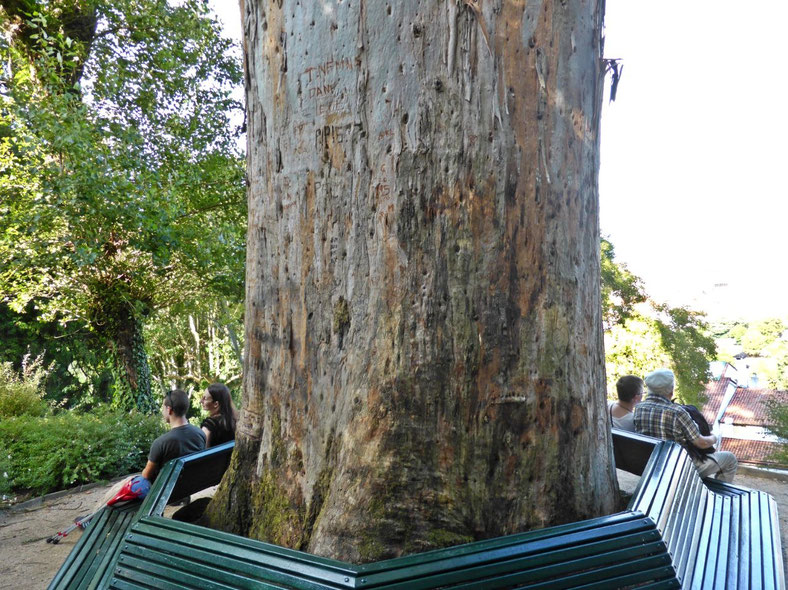
I've been moving across northern Portugal and north-west Spain by bus and train over the last few days, and I've seen such vast numbers of Australian gum trees that it is almost frightening. Their density is far greater that it was in the south of the Iberian peninsular.
When I first started to see all these gum trees in southern Spain in April I though it was kind of cute; now it's almost becoming embarrassing that my fellow Australians are brutally overwhelming the native ecosystems here in Portugal and Spain. (Damn - there's that useless guilt!) Here, they seem to be more invasive that camphor laurel trees are in Australia.
Many of these trees are in the straight lines of plantations, but they cover huge area beyond that as well, displacing the native environment; that's if anyone in Europe has any idea of what the 'native' environment is, or even what the term 'native' means, after so many millennia of human intervention. Certainly, however, the gum trees have taken over a huge part of the landscape.
In fact, a little research shows that they have been, and are, big trouble. The trees brought about social, environmental, and long-term economic damage when huge plantings were planted by Scandinavian businesses in the 1960s. At that time, Portugal needed the short-term cash to fight against the independence of several of the African territories that it had invaded hundreds of years before, and so had to cop the long-term damage of the Scandinavian plantations on its home ground. (There's a bit of karma in that.) As usual, the short-term gain of big business overrode the long-term stability of society, the environment, and the economy. If you want to find out a bit more about these plantations, and the consequences of the gum trees, go here.
Most of the gum trees that I see are not too big, maybe up to 30 centimetres diameter, which indicate that either they are all plantation, including the one that are not planted in lines, and they get harvested regularly - maybe every 10 to 15 years - or they have only taken over in the last 10 to 15 years. However, today I visited Santiago de Compostela, and came across one of the biggest gum trees that I have ever seen, anywhere, in the Alameda Park, overlooking the Catedral de Santiago de Compostela. This picture of people sitting around its trunk gives you an idea of its size:

And here's the whole tree:
My guess is that it must be pushing 100 years old; what do you reckon?

